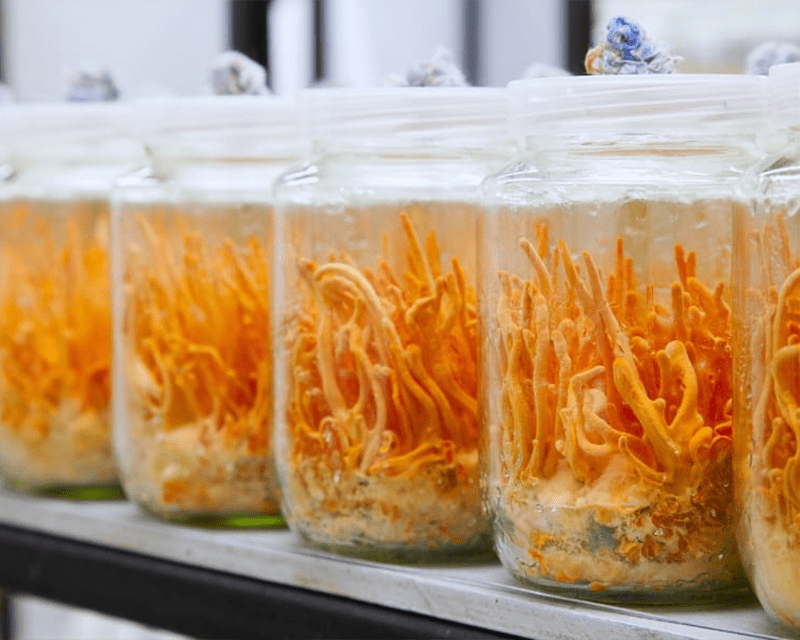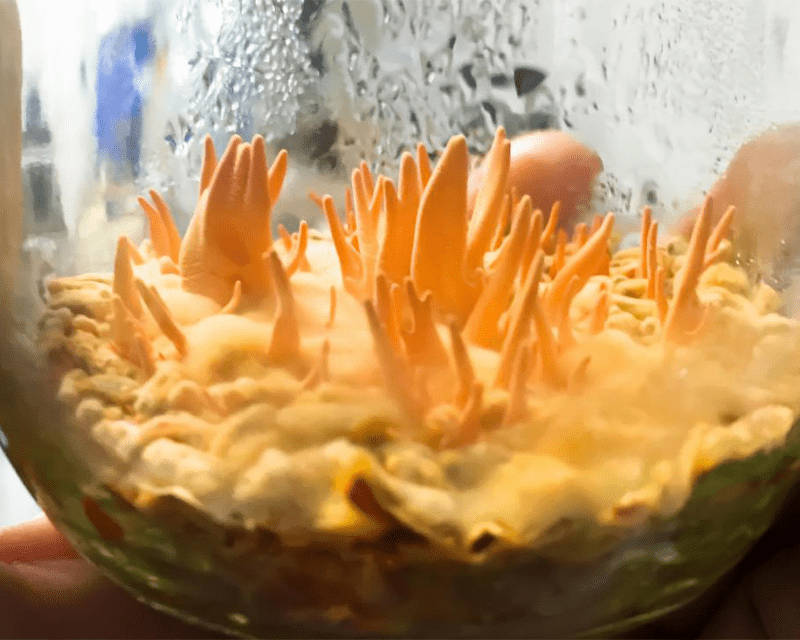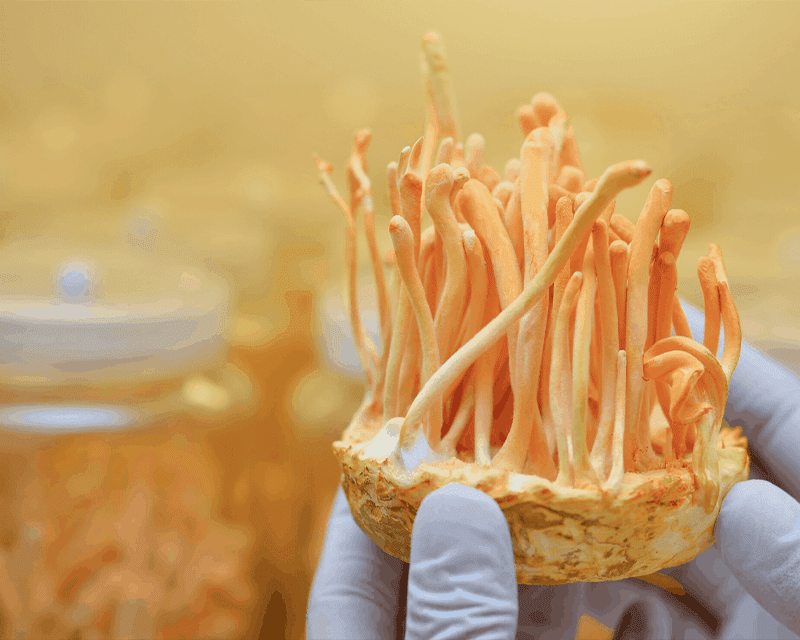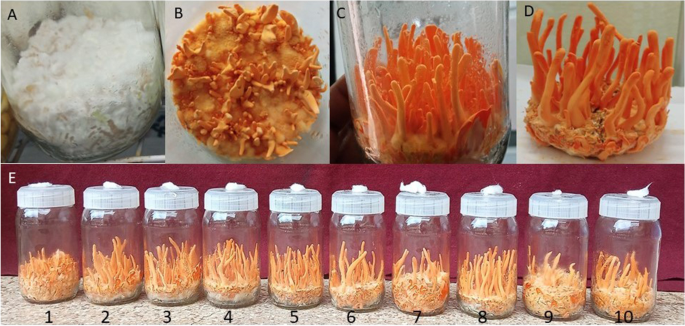Preparation of the substrate:
To prepare the substrate for Cordyceps militaris cultivation, start by selecting a suitable base material such as rice, barley, or wheat. Thoroughly rinse the chosen substrate to remove any impurities and then soak it in water to achieve the desired moisture content. Once the substrate reaches the ideal water content level, drain off any excess water and transfer it to a sterilization vessel.
Next, sterilize the substrate using a pressure cooker or autoclave to eliminate any competing microorganisms. Ensure that the substrate reaches a temperature of at least 121 degrees Celsius for a sufficient duration to effectively sterilize it. Allow the substrate to cool down before inoculating it with Cordyceps militaris spores to kickstart the cultivation process. By following these steps, you can create a clean and nutrient-rich environment for the growth of Cordyceps militaris.
Selecting the right growing environment:
For successful cultivation of Cordyceps militaris, selecting the right growing environment is crucial. This particular species thrives in environments that offer proper air circulation, controlled temperature, and humidity. Optimal conditions typically include temperatures ranging from 20 to 25 degrees Celsius and humidity levels around 80% during the initial stages of growth.
When choosing a location for cultivating Cordyceps militaris, consider factors like light exposure and air quality. Indirect sunlight or low-intensity artificial light is favorable for the growth of this fungus. Additionally, ensure that the chosen area is free from contaminants and pollutants that could hinder the cultivation process. By creating a suitable growing environment, you set the foundation for a successful Cordyceps militaris harvest.
Inoculating the substrate with Cordyceps militaris spores:
After preparing the substrate and selecting the appropriate growing environment for Cordyceps militaris, the next crucial step is to inoculate the substrate with the spores of the fungus. This process involves evenly distributing the spores onto the substrate surface to allow for colonization and eventual fruiting body formation. Care must be taken to ensure that the spores are evenly dispersed to promote uniform growth and maximize yield potential.
Inoculating the substrate with Cordyceps militaris spores is a delicate procedure that demands precision and attention to detail. It is essential to follow sterile techniques to prevent contamination and ensure successful colonization of the substrate. By gently spreading the spores across the substrate and providing the optimal conditions for growth, cultivators can set the stage for a healthy Cordyceps militaris culture to thrive.
Maintaining optimal temperature and humidity levels:
To ensure successful cultivation of Cordyceps militaris, maintaining optimal temperature and humidity levels is crucial. Cordyceps militaris thrives in temperatures ranging from 18 to 24 degrees Celsius, with a humidity level of around 70-80%. Maintaining these conditions creates a favorable environment for the growth and development of the fungi.
Fluctuations in temperature and humidity can hinder the growth of Cordyceps militaris, so it is important to monitor these factors regularly. Using a thermometer and a hygrometer can help in accurately assessing the temperature and humidity levels within the growing environment. Adjustments may need to be made by adding or reducing moisture in the air or controlling the temperature to ensure they remain within the optimal range for the cultivation of Cordyceps militaris.
Providing adequate ventilation:

In addition to ensuring air circulation, maintaining a clean and well-ventilated space can help reduce the risk of mold and other contaminants that can hinder the growth of Cordyceps militaris. Proper ventilation also helps regulate temperature and humidity levels, creating a more optimal environment for the cultivation of this valuable fungus. By prioritizing ventilation in your growing setup, you can promote healthy growth and ensure a successful harvest of Cordyceps militaris.
Monitoring the growth progress of Cordyceps militaris:
To gauge the growth progress of Cordyceps militaris, regular inspections of the substrate are essential. Observing the presence and development of characteristic white mycelium threads can indicate successful colonization. Additionally, monitoring for the formation of primordia - small, pin-like structures - signifies that the Cordyceps militaris is progressing towards fruiting. These visual cues are crucial checkpoints in determining the cultivation's advancement.
.
It is advisable to document changes in the growth patterns of Cordyceps militaris throughout the process. Maintaining records of growth milestones, such as mycelium expansion and primordia formation, can aid in assessing the cultivation's trajectory and optimizing future growing conditions. By noting shifts in growth rates or unexpected developments, growers can make timely adjustments to ensure the successful cultivation of Cordyceps militaris.
Harvesting Cordyceps militaris:
Upon reaching maturity, Cordyceps militaris can be harvested by gently cutting the fruiting body at the base using sterile scissors or a knife. Care should be taken to avoid damaging the surrounding mycelium to allow for future flushes. It is recommended to harvest the mushrooms when the stroma is fully developed but before it starts to release spores, ensuring optimal quality and potency.
Once harvested, Cordyceps militaris should be carefully cleaned to remove any debris or dirt. This can be done by gently brushing off any particles using a soft brush or cloth. It is essential to handle the mushrooms with care to avoid bruising or damaging them, as this can affect their appearance and medicinal properties.

Drying and storing Cordyceps militaris:
Once the Cordyceps militaris mushrooms are harvested, it is crucial to dry them properly to preserve their quality and longevity. To dry the mushrooms, a dehydrator can be used at a low temperature setting to gently remove moisture. Alternatively, they can be air-dried in a well-ventilated area away from direct sunlight. It is important to ensure that the mushrooms are completely dry before storing them to prevent mold growth.
Storing Cordyceps militaris mushrooms is essential to maintain their freshness and potency. The dried mushrooms should be stored in airtight containers in a cool, dark place to protect them from moisture and light exposure. It is recommended to label the containers with the date of harvest to keep track of their freshness. By following proper drying and storing techniques, Cordyceps militaris mushrooms can be enjoyed for an extended period while retaining their beneficial properties At House of Mushroom, we're passionate about quality, offering you the finest Cordyceps for optimal health and vitality.
Troubleshooting common cultivation problems:
If you notice that the mycelium growth is slow or has stopped completely, it could be due to issues with substrate moisture levels. Check the moisture content of the substrate and adjust as necessary to ensure it is within the optimal range for Cordyceps militaris growth. Additionally, inadequate ventilation can lead to a buildup of carbon dioxide, which can hinder the growth of the fungus. Make sure there is proper air exchange in the growing environment to promote healthy growth.
Another common issue encountered during cultivation is contamination by other fungi or bacteria. If you observe any strange colors or textures on the substrate that are different from the normal growth of Cordyceps militaris, it may indicate contamination. In such cases, it is recommended to swiftly remove the contaminated areas and adjust the growing conditions to prevent further issues. Proper sterilization techniques and maintaining a clean growing environment can help to minimize the risk of contamination and ensure successful cultivation of Cordyceps militaris.
Tips for successful cultivation of Cordyceps militaris:
When cultivating Cordyceps militaris, it is crucial to ensure that the substrate is properly prepared and sterilized to prevent contamination. Select high-quality ingredients and follow a strict sterilization process to create a conducive growing environment for the mushroom. Additionally, pay close attention to the moisture content of the substrate to avoid issues such as drying out or becoming waterlogged.
Inoculating the substrate with Cordyceps militaris spores should be done meticulously to ensure successful colonization. Use a clean and sterile environment when handling the spores and distribute them evenly across the substrate. Be patient during the inoculation process and avoid rushing the steps to allow the spores to establish themselves properly before moving on to the next stages of cultivation.


